Since Lieca started to create a camera that could load 35 mm film to take pictures in 1931, it made the camera smaller and more portable than the cameras that used larger sheet film in the past. It has been improved continuously since the film had to be loaded in the camera in a darkroom until after World War II when Kodak invented loading roll film in a cartridge that did not need to be loaded in a darkroom. The cartridge could be used and discarded, called the 135 film model. Cameras that used 35 mm roll film have become widely popular. They can take pictures in the size of 24 x 36 mm. There are options to shoot 12, 24 or 36 frames. In Europe, the main manufacturers of this type of camera are Leica, followed by Zeiss, Contax or Voigtlander, which produce cameras with good quality and high prices according to the quality of the camera. In America, there is Kodak, which is quite expensive. Argus produces cameras that are more affordable. It became very popular and brought 35mm film photography to a group of people who could not afford the expensive cameras from Europe. The Argus C3 is considered the best-selling 35mm camera ever made.
The Argus C3 is considered the best-selling American 35mm camera of all time. The details of the camera were improved throughout the 28-year production line, but it still retained the shape of the "brick", which is the identity of this camera model. It was launched from 1938 until the last model of the production line in 1966. In total, more than 2.2 million units were produced.
The reason why this camera model is so popular and successful is because it looks different from other cameras. The design is beautiful, unique, timeless, and still looks beautiful today. It uses high-quality lenses. It has a fairly complete range of functions. Most importantly, the price is affordable at $25 at that time. Later in 1950, sales began to decline. Even though Argus tried to produce new models, most people still bought the C3 model. As its popularity declined and new models from other brands kept coming out, Argus was eventually shut down in 1966.
Let’s take a look at the details of this camera.
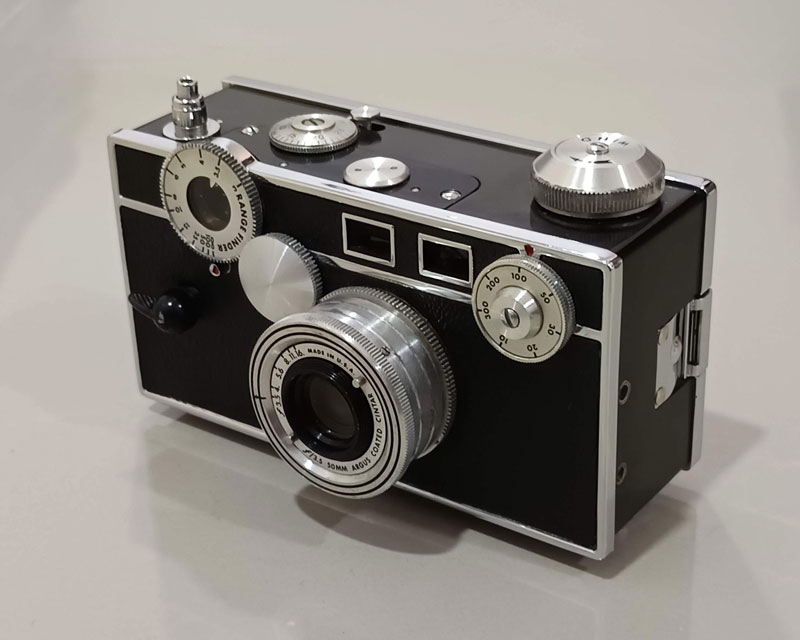
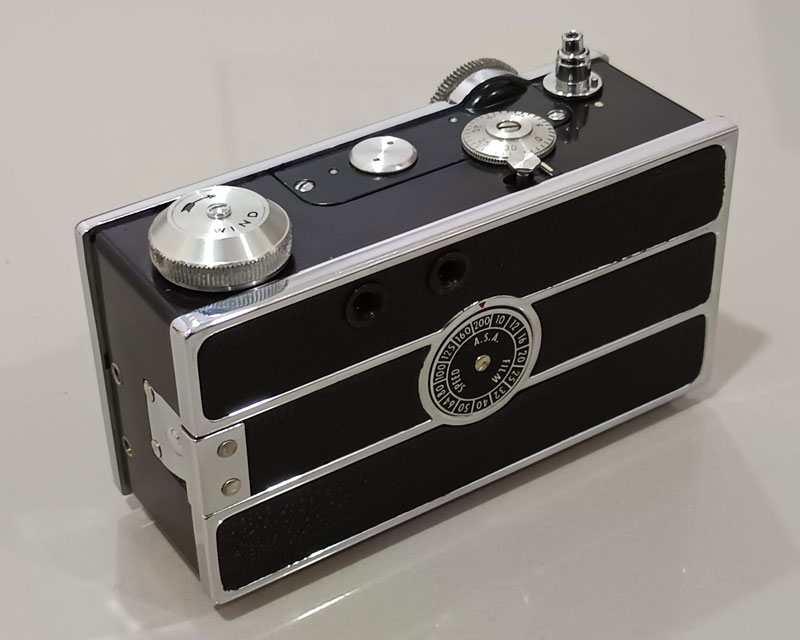
รูปทรงสี่เหลี่ยมที่เป็นเอกลักษณ์ ออกแบบด้านหน้า และด้านหลังได้แตกต่างจากกล้องทั่วไป
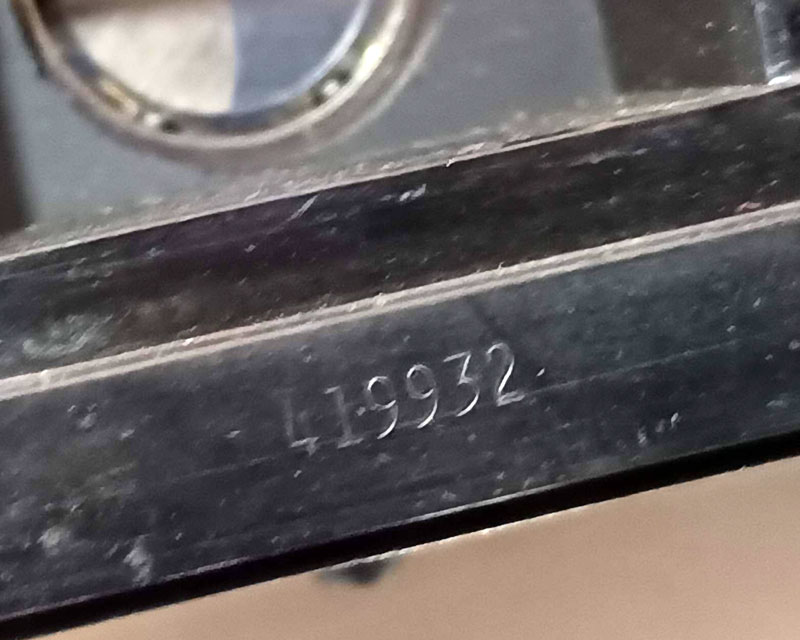
The Argus C3 camera shown here is serial number 419932. When comparing the details at When was my Argus camera made? you will see that it is C3 (Post War), which means it was produced after World War II, which is in 1949, which means that this camera is approximately 76 years old (in 2025).
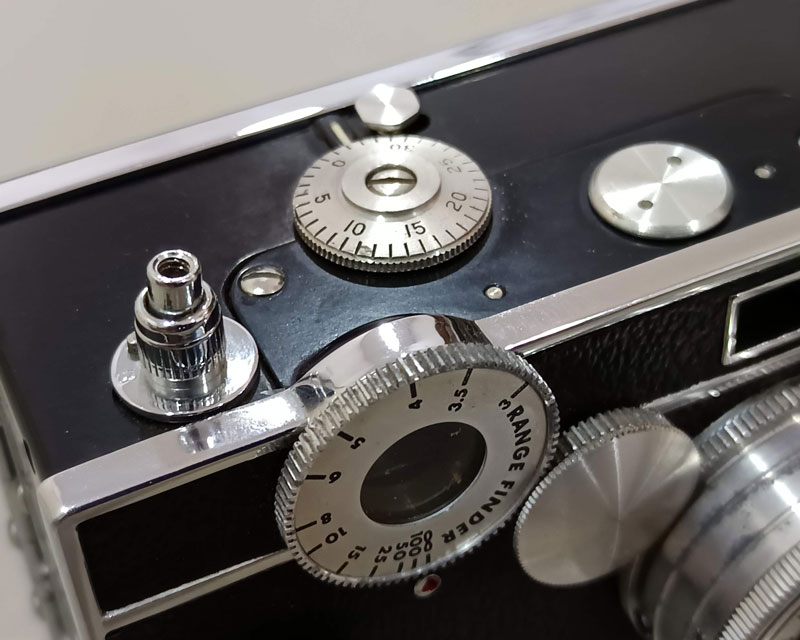
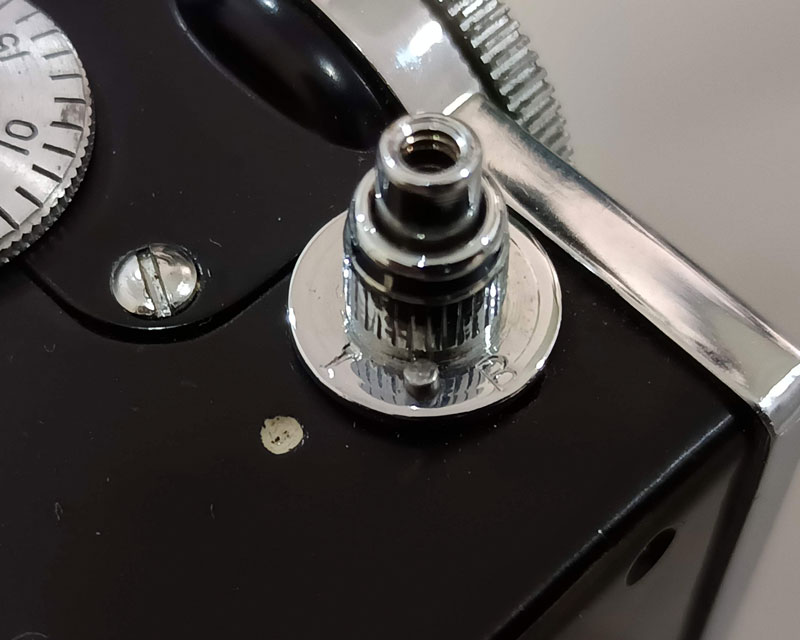
On the top right side of the camera is a shutter release button, which has a threaded hole for a shutter release cable. At the base of the shutter release button, you can rotate to select the shutter release between I, which is a normal shutter release, and B, which is a shutter release that remains until released.
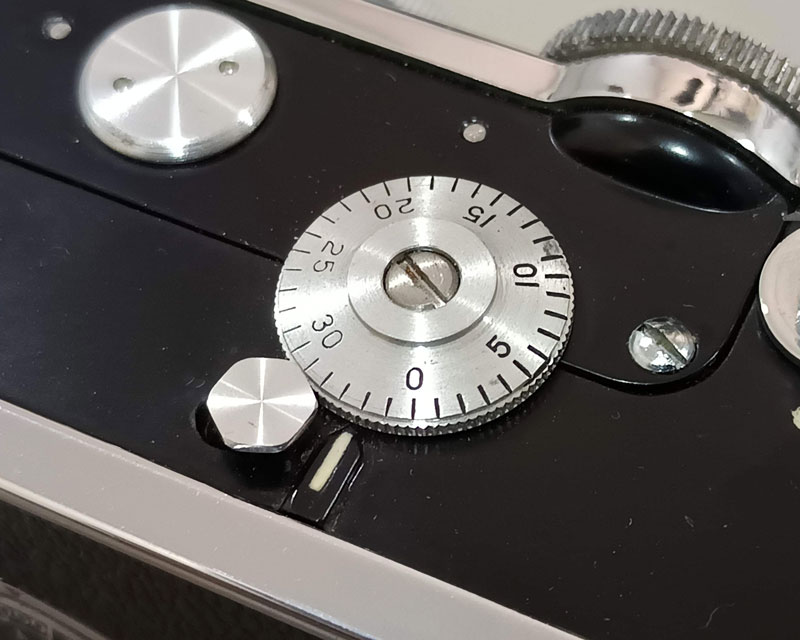
The dial shows the number of shots taken. The hexagonal button on the back is a trigger that locks the film when one frame is taken. Once a photo is taken, push it to the left to release the film and advance to the next frame. The dial has two small holes that open to adjust the focus portion of the focus window.
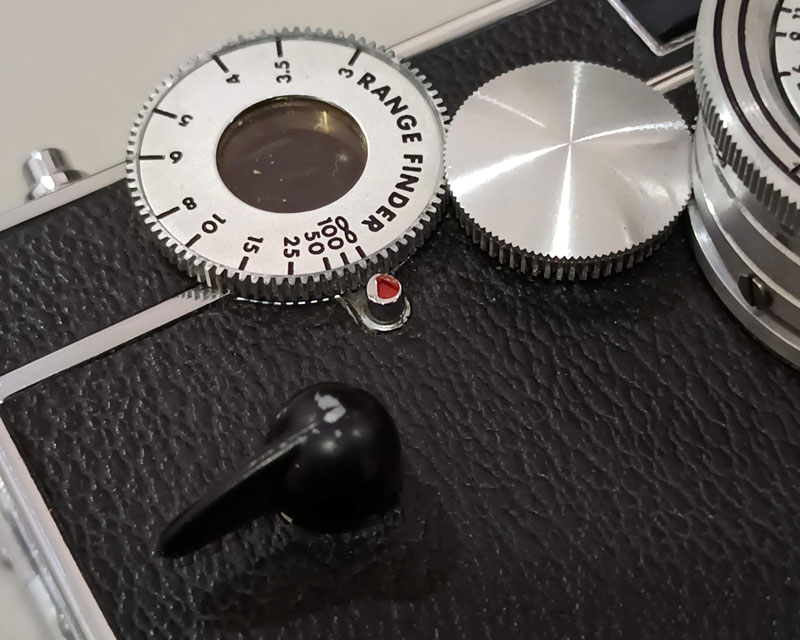
On the front right side, there is a round dial for adjusting focus. The round dial has a focus distance number. This one shows the value in feet. Contact with the front lens with a round gear, making the focus distance number match the focus distance of the lens. Below, the black round dial is the trigger for raising the shutter to take a picture.
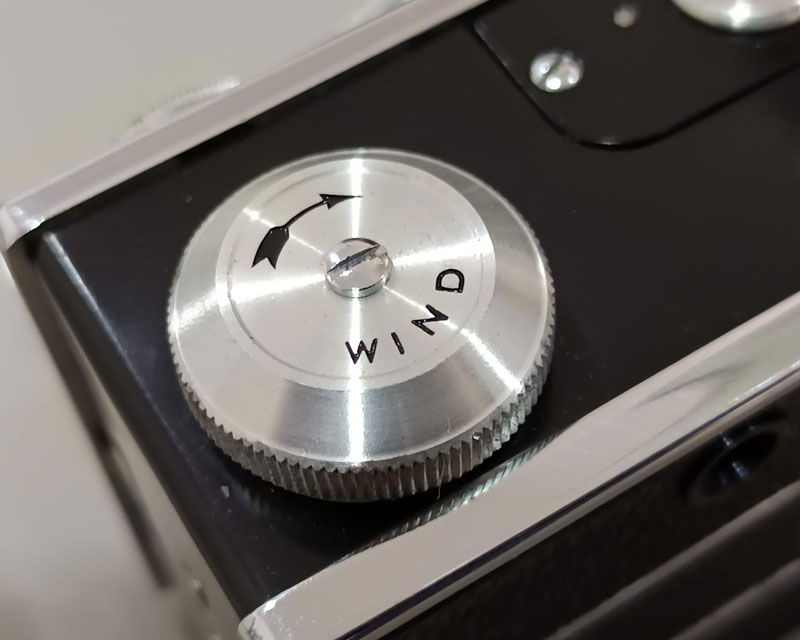
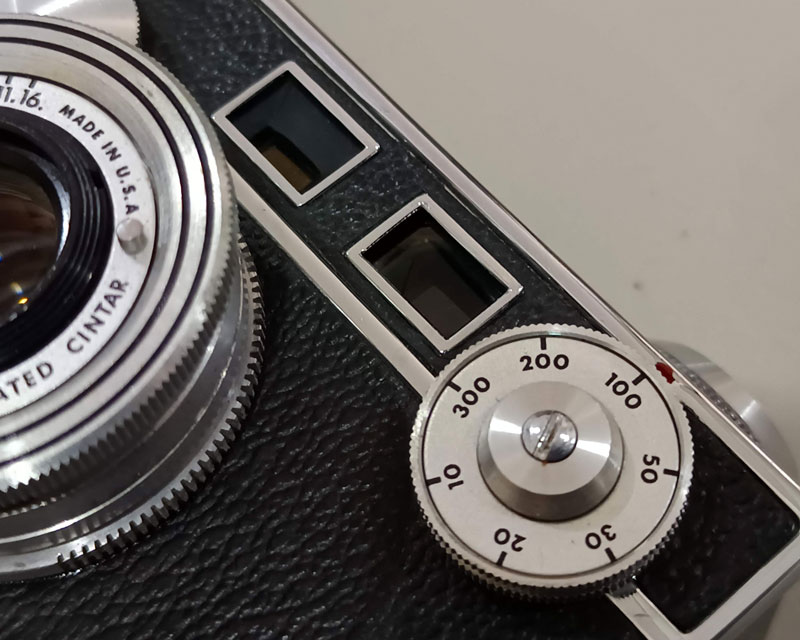
On the top left of the camera, there is a round dial, the letters WIND, and a curved arrow to rotate the film to advance the next photo.
On the left side of the front, there are two squares. The left is for focusing on the photo only, so it is not full. The right is for viewing the photo you want to take. And the round dial for adjusting the shutter speed. This one has values from 1/10 to 1/300 as shown in the picture.
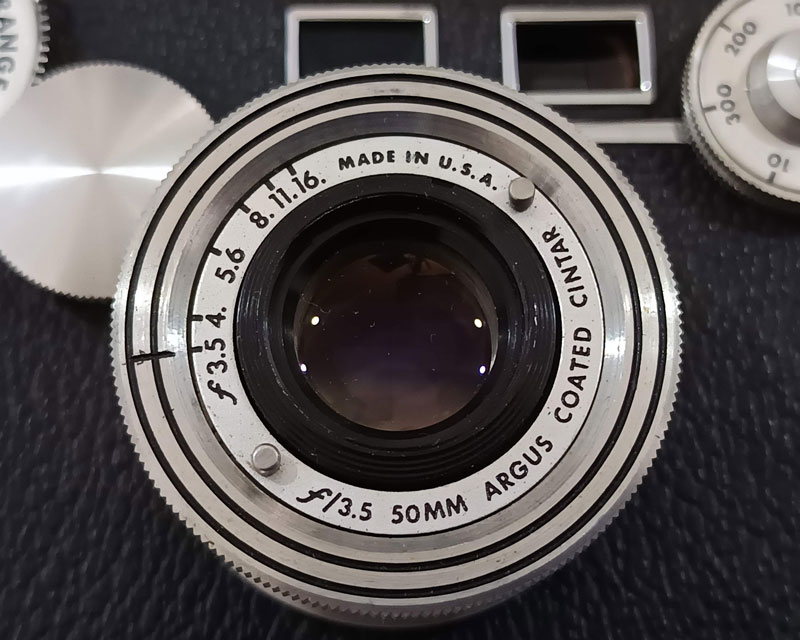
In the front center is the ARGUS COATED CINTAR f/3.5 50MM MADE IN U.S.A. lens. Adjust the aperture by holding the two knobs shown in the picture and turning them so that the aperture number aligns with the black line on the edge of the lens.
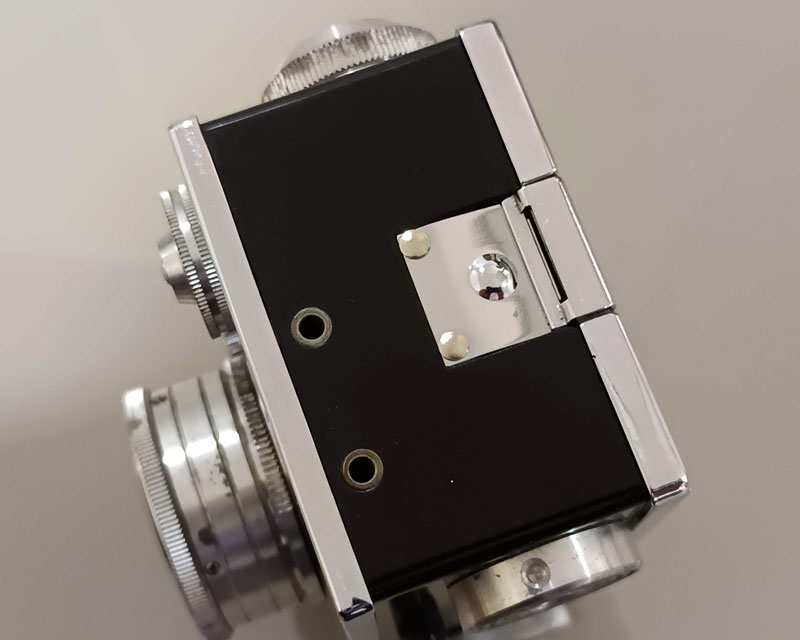
On the left side of the camera, there are 2 holes for inserting a flash that is produced specifically for this camera model. On the back, there is a button for opening and closing the back cover.
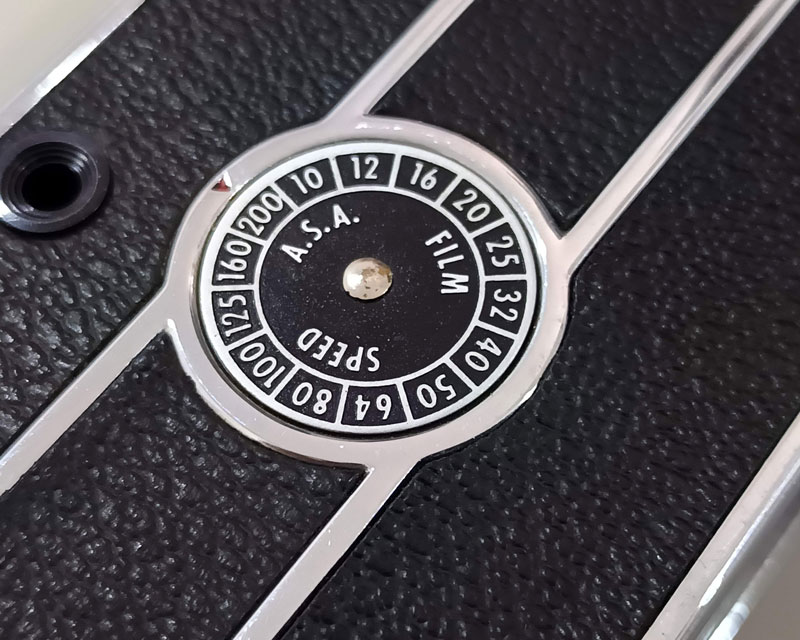
On the back of the camera cover, there is a round dial that shows the current A.S.A. Speed Film or ISO value of the film. It can be rotated and set the number to align with the red arrow to show the value of the film being used. Just to prevent forgetting, it has no effect on taking pictures.
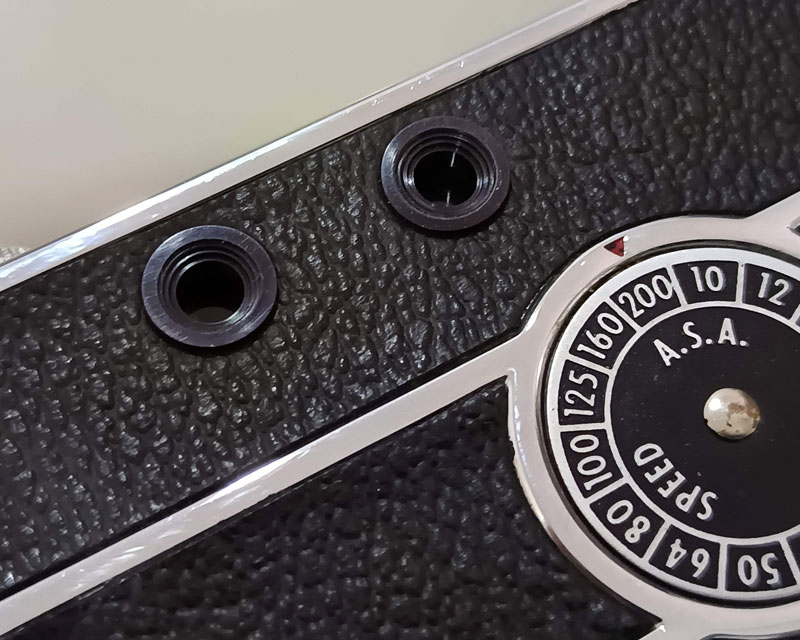
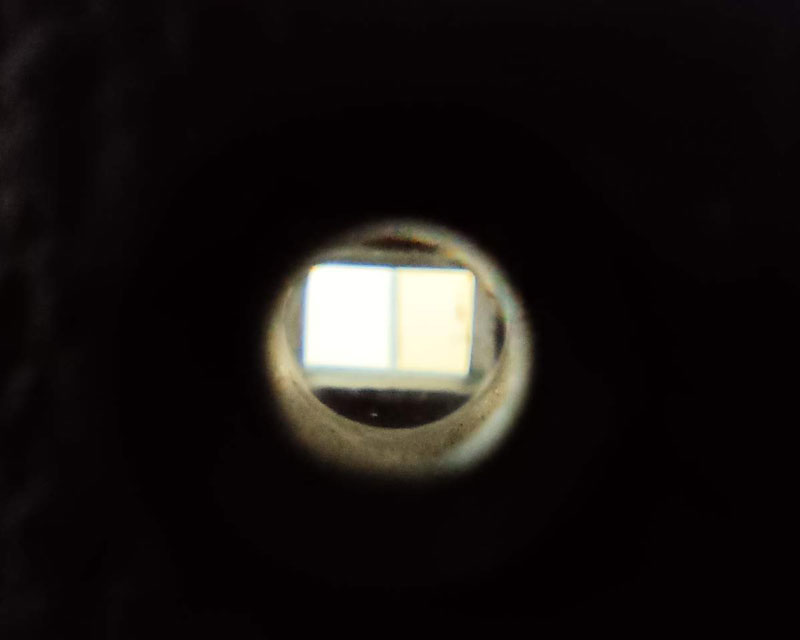
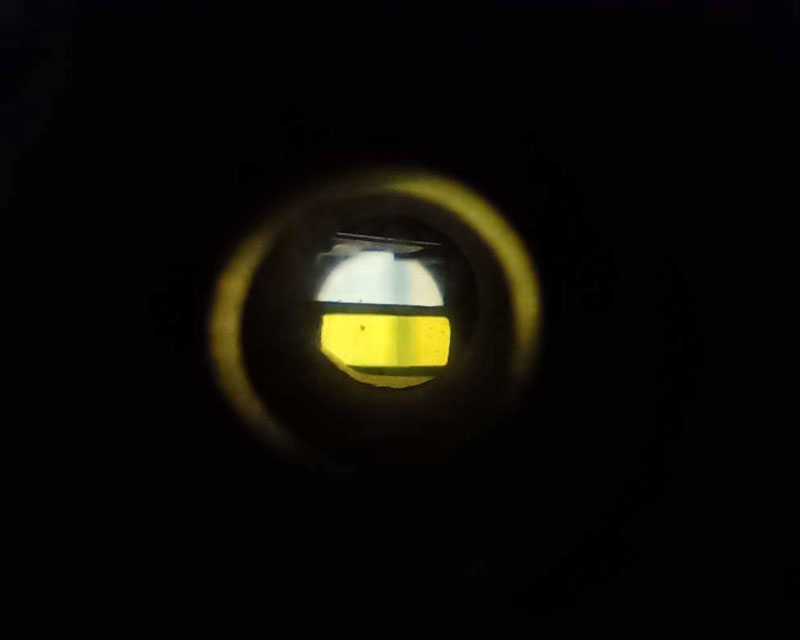
On the top of the back, there are two round holes for viewing the image to be taken and focusing on the subject.
The left hole is for viewing the image. The right hole is for focusing. Set the focus by turning the focus dial so that the white upper half is aligned with the yellow (or blue in some models) lower half.
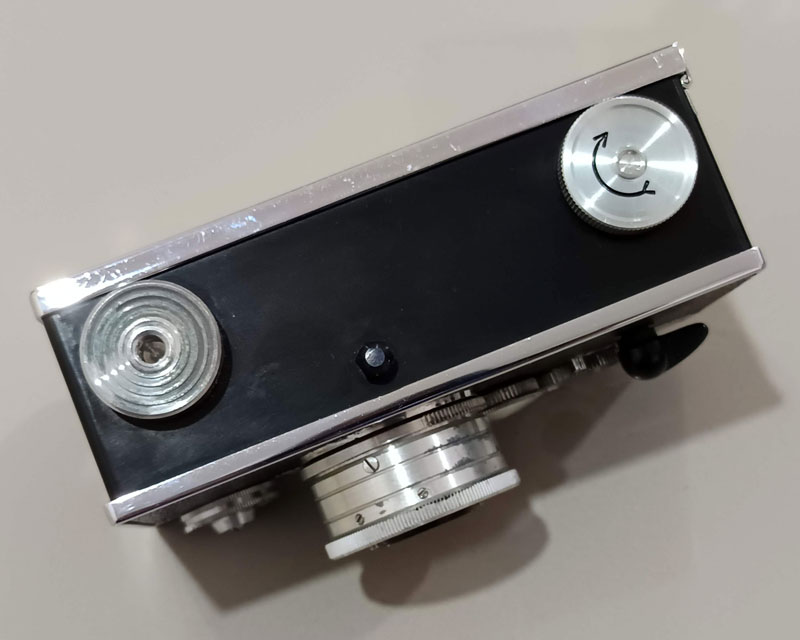
On the underside of the camera, in the picture, there is a tripod screw hole on the left side of the dial, a black button in the center to help keep the camera from tipping forward, and a right dial to rewind the film into the canister once the shots have been taken.
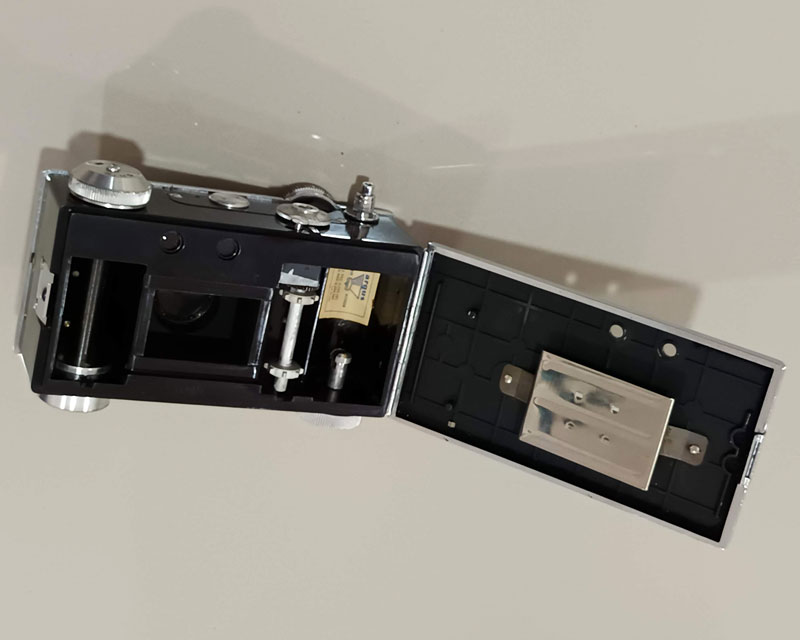
When you open the back cover of the camera, you will see what is shown in the picture. The camera has a slot for inserting a roll of 135 or 35mm film, as it is commonly called. On the side of the camera cover, there is a square plate with a spring to push the film to fit into the film receiving slot on the camera.
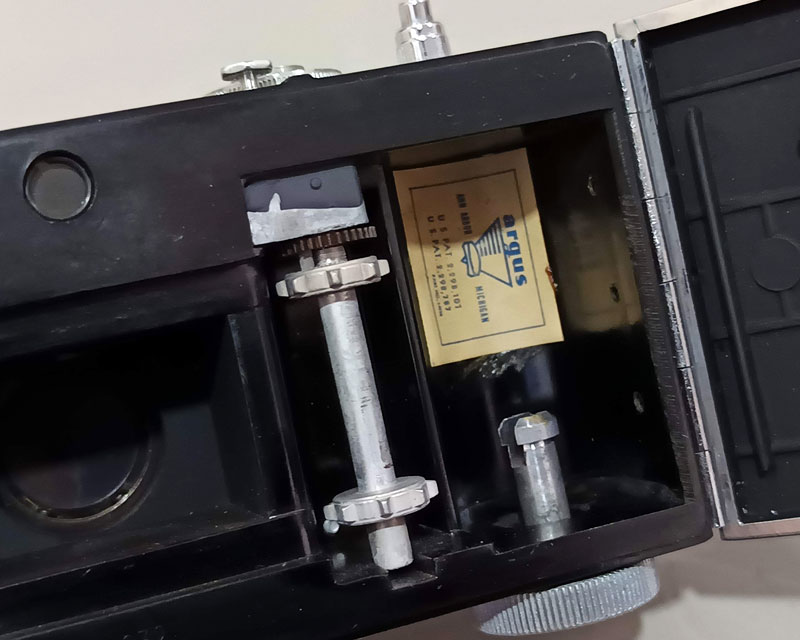
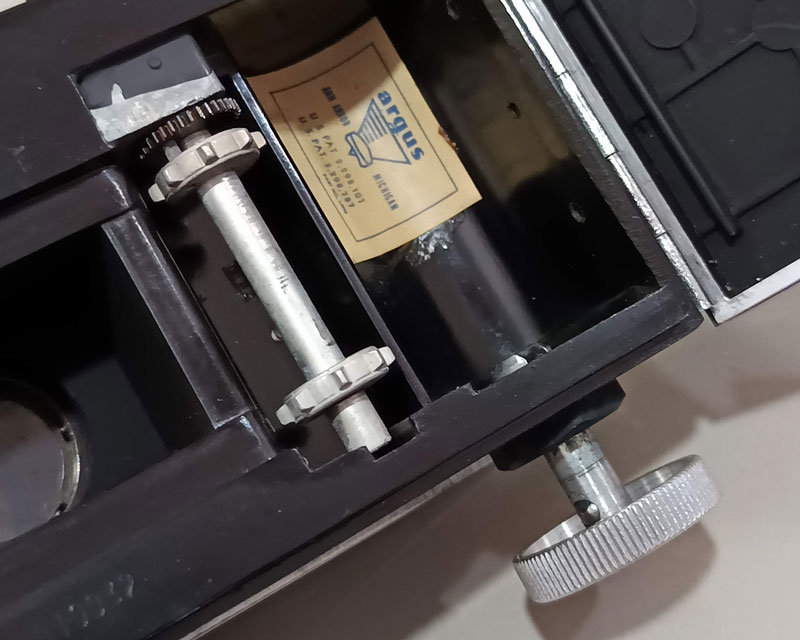
A slot for inserting a new 135 film cartridge by pulling out the bottom round dial to allow film to be inserted. Once the film cartridge is inserted, push the dial back in so that the spindle fits snugly into the film cartridge body.
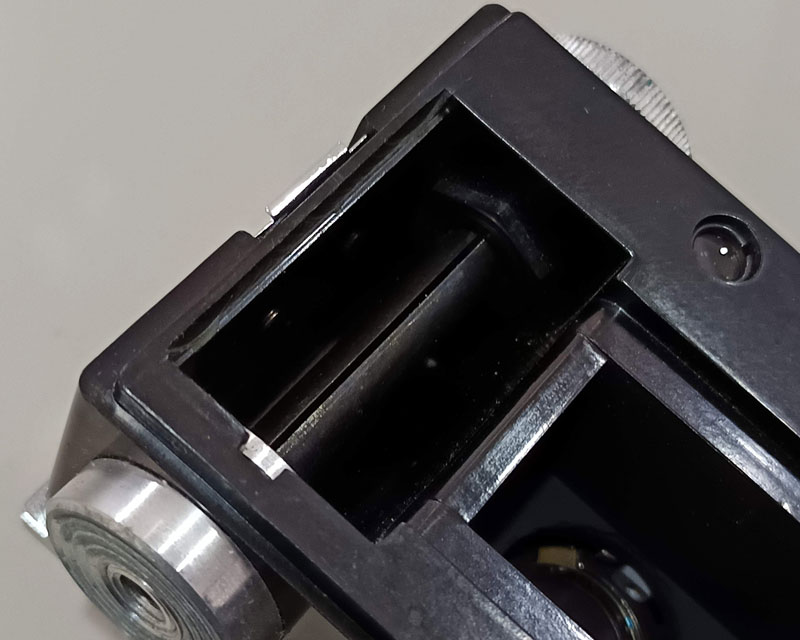
Left Film Slot: When the right film cartridge is inserted, pull the film tail and insert it into the left film slot as shown in the picture. Rotate the film to make sure it is firmly in the slot and does not fall out, then close the rear cover.
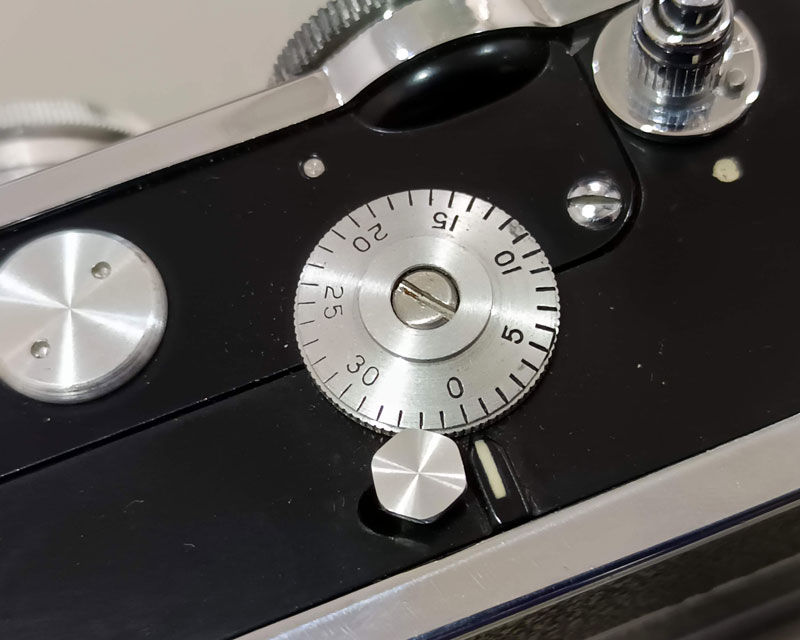
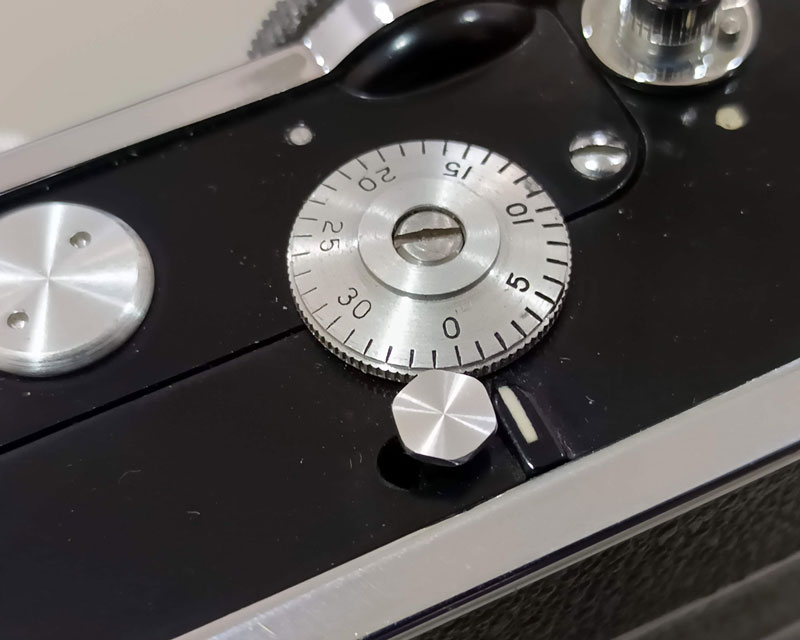
When the film is loaded, turn the number of shots dial at the top to 0 to start shooting. Normally, the first shot is not usable. Press the shot and move the film forward to the next shot. It will be the 1st shot, and you can start shooting. When the roll is finished, push the hexagonal button to the left and turn the film dial back into the cartridge until it is finished. This completes the shooting of 1 roll.
Sample photo from Argus C3 camera
This photo is a test of the contrast between the dark interior and the bright exterior. The lens captures details quite well.
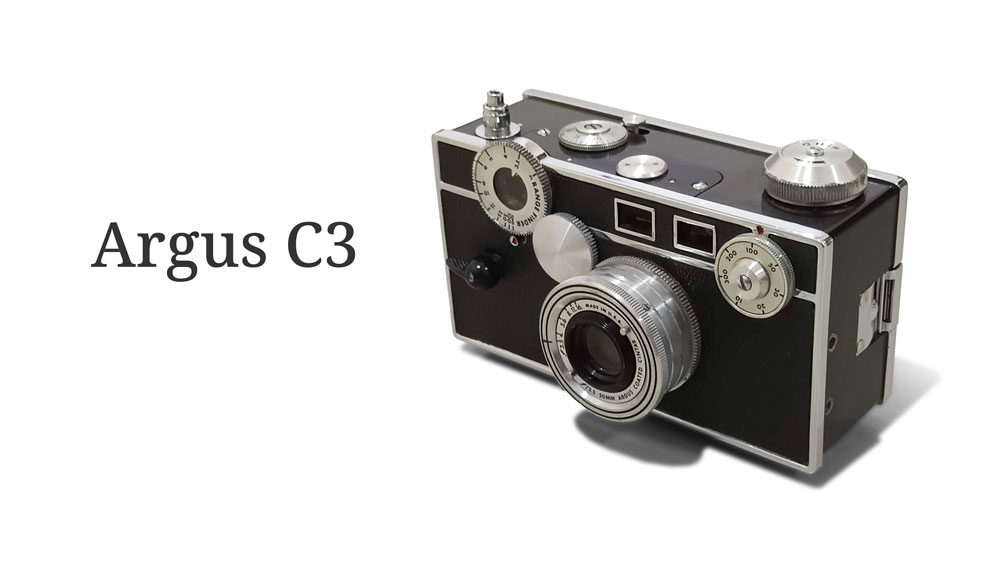







Comments powered by CComment